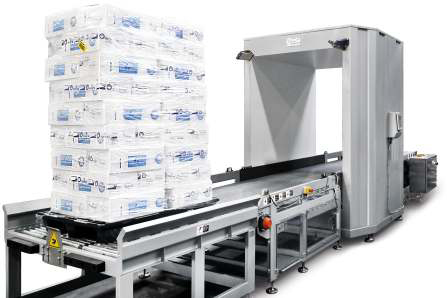Cargo Security: A global issue threatening international trade on air, land and sea
The Transported Asset Protection Association for the Middle East & Africa recorded more than 24,000 thefts over the past three years with an estimated product value in excess of EUR 400 million.
As we dive into the complex and ever-evolving world of cargo security, it’s important to first acknowledge the daunting reality of the task at hand. Each year, billions of dollars’ worth of goods are transported across the world by air, sea, and land, making the safety and security of these shipments a constant concern for businesses and governments alike.
Despite efforts to mitigate risks, recent data from the Transported Asset Protection Association (TAPA) suggests that cargo theft remains a significant threat. In fact, TAPA Middle East & Africa (EMEA) region alone has recorded over 24,000 thefts from supply chains in the last three years, resulting in losses of products worth over €400 million. And these figures are based on only 31% of recorded crimes stating a financial loss figure.
Clearly, the stakes are high when it comes to cargo security. But as we explore the latest trends and strategies for enhancing cargo security in this article, we’ll also see that there is reason for optimism. Through technological advancements, regulatory measures, and risk management practices, there is hope that we can build a safer and more secure environment for global trade. So, let’s dive in and see what the future of cargo security might hold.
Current State of Cargo Security Globally
The global air cargo security landscape continues to evolve, and there has been a significant increase in the screening of both cargo and shippers. Nations are now advocating for the harmonization of regulations between countries to streamline the shipment process and avoid delays. The more countries adhere to a single set of rules, the less confusion there is, and there is increased alignment in terms of air cargo security.
According to Brandon Fried, Executive Director of the Air ForwardersAssociation (AFA), the United States has adopted and is in the final stages of implementing the 2016 International Civil Aviation Organization (ICAO) guidance that expands air cargo security requirements on cargo-only aircraft. This increased activity creates AFA member questions requiring clarification on the procedural aspects. Accordingly, their role as an association has been to engage the U.S. Transportation Security Administration (TSA) in obtaining interpretations to avoid operational confusion.
In addition, Mr. Fried notes that the U.S. air cargo industry continues to see success with TSA’s Third-Party Canine Screening Program, which screens shipments efficiently before boarding flights. Many of their members have employed this screening method in their TSA-validated screening facilities.
Nicolas Ouakli, Global Solution Manager at Cargo And Mail Screening Equipment, highlights that the biggest threat to cargo security is the presence of assembled explosives and incendiary devices. To prevent this threat, there is a need for a standardized screening method that can be applied globally to avoid discrepancies in regulations and recognition issues between locations.
Recent Developments and Trends on Cargo Security
Marcus Campbell, Chief Technology Officer (CTO) of Hermes Logistics Technologies, highlights that the COVID-19 pandemic forced us all to work remotely and accelerated the digital transformation of workplace systems and work practices. However, it also dramatically increased the number of people working from home on unprotected laptops, which has massively increased the risk and threat landscape for cybersecurity.
Mr. Campbell argues that the cargo industry needs to be better prepared to protect digital cargo operational infrastructure at the API, hardware device, IoT, data, network, and application layers. He points out that it is easy to think that just because a company has a good security posture for its Cargo Management System, it is protected. Still, cyberattacks may have started inside the cargo warehouse infrastructure or within an earlier part of the supply chain.
With the daily press reporting new cyber-attacks, many organizations blindly go about digital transformation without considering the real impacts on their business. Digital transformation done badly can greatly increase a cargo business’ attack surface and expose operations to ransomware, phishing, and distributed denial-of-service (DDoS) attacks.
Effective Strategies for Enhancing Cargo Security
There have been significant improvements in screening technology, including using more sophisticated X-ray scanners and improved explosive trace detection devices. There is also increasing interest in biometric identification as a means of improving security, including facial recognition and fingerprint scanning. These technologies have the potential to significantly enhance cargo security in the future.
According to Mr. Fried, the U.S. Department of Homeland Security has taken aggressive measures by requiring forwarder personnel to concentrate on cybersecurity and to report attacks to the agency immediately. He also notes that the AFA launched a technology committee focusing on this issue, providing members with helpful resources.
Mr. Campbell suggests that businesses should consider a more rounded service, such as Hermes Logistics Technologies’ SaaS managed service, which is a Software-as-a-Service solution that aims to focus the customer on the business of running their cargo operation while the company takes care of running their CMS infrastructure.
Mr. Nicolas believes that the key to addressing the challenges raised by air cargo security is the harmonization of air cargo screening regulations and standard operating procedures. Regulators should provide more guidelines to security operators and cargo security managers, ensuring that they know which screening procedures to use according to the commodities they must screen.
While passenger screening procedures are 100% regulated, cargo screening procedures require more flexibility due to the vast variety of commodities that need to be screened. Nonetheless, detailed guidelines would be beneficial for security operators to know which method to apply based on the commodities they have to screen. Implementing these changes will ensure the safety of the goods being transported.
As we look to the future, one thing is clear: the security of air cargo will continue to be a top priority for the industry. The challenges may be complex and ever-evolving, but with the right combination of effective strategies and technologies, we can create a more secure and resilient ecosystem for global trade. From increased screening of cargo and shippers to the adoption of biometric identification, there are many tools at our disposal to help us meet these challenges head-on.
However, it is only through collaboration between businesses, governments, and industry experts that we can truly ensure the safety and security of goods in transit. As we continue to navigate the complexities of the global economy, experts urged for all industry stakeholders to work together towards a common goal of creating a safer and more secure world for all.














